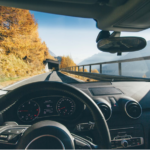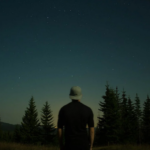Basic Tips for Travel Photography

It is miserable to tinker with an excellent SLR camera and also not be able to capture several failed, terrible and disastrous photos, one after the other, due to naive failures on the basics of travel photography, basics that every photographer, however novice, should know. The techlog360.com bring you some tips from the basics of photography, with which you will be able to take proper photos that are right through the eyes. At least the basics will be on your side.
Know the Rules
This principle is quite simple, but it has a huge effect on the way you take a photo. It consists of mentally dividing the picture into 9 equal parts (using two parallel horizontal lines and two vertical lines) and placing the subject at a point on all the lines. If you are composing a photo before taking it, imagine two parallel horizontal lines dividing the image into 3 equal parts. This can be useful in both landscape and portrait modes. Shoot All Your Images in RAW, This preserves all the elements of the image (colors, light, shadows, and saturation) and, with further processing, allows you to move them around. Shooting in JPG creates a pre-image where you would have no room to make adjustments.
Explore New Angles

Experiment with photography by shooting your camera from bold and strange angles. Capture the unique information of the crop while giving up the rest of the activity. The results are usually surprising. To get great photos of children, squat or kneel, try to lower your camera to the same specific height as the child or animal you need to photograph, and you will transfer a lot of realism. Even if it’s a particularly sunny day, flash can help avoid areas of darkness on the face of someone wearing a hat or something that casts a shadow or sunlight is photographed underneath the individual. The best thing to do to block this is to force the flash. This is called fill flash, and its intention is not to illuminate the shadow but to add light to the face of the region so that it is uniform with its surroundings.
Decide Your Location

Since you know where you’re going (it’s a minimum requirement), doesn’t it make sense to take a look before you get there? This is an excellent resource for doing so. Calculate the picture possibilities of each suitable place. Anyone can take a ‘that’s a good one’ photo of children in an amusement park. Wouldn’t you rather take a ‘WOW’ picture that can be hung over the fireplace? Depending on where you are traveling, you can check the books to see who highlights the best photo opportunities around. The best thing about national parks is that the scenery is often so breathtaking that a mediocre photo looks exceptional, simply because of the subject matter.







